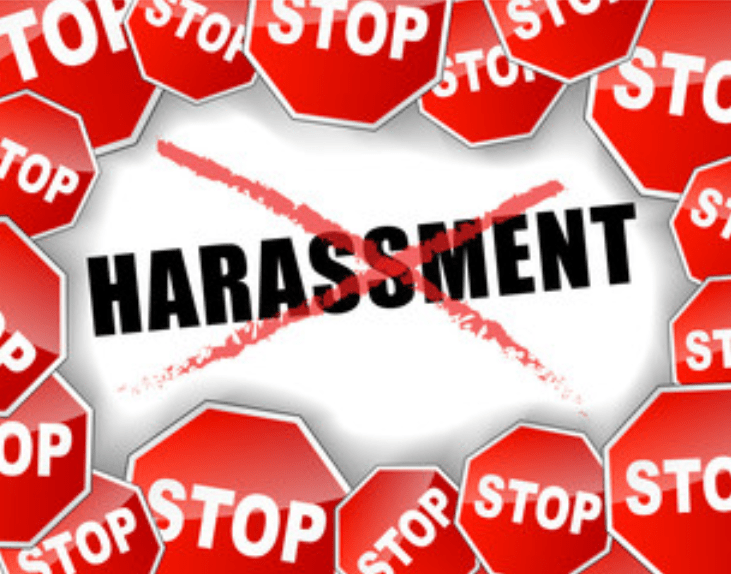We’re on the verge of a national reckoning about sexual harassment.
Where it Happens
Sexual Harassment is pernicious.
It happens when a high powered person can make or break an underling’s career. A situation with a high probability for harassment is when powerful individuals can decide your future.
“It happens in companies and universities; on factory floors and on movie sets; in restaurant kitchens and congressional offices.” -Marianne Cooper
It happens when a powerful person holds the key to your future but wants something in return. We see examples happen when a movie producer has the power to cast an unknown actress into a starring role; when a venture capitalist can provide funding to a woman entrepreneur; when a professor can write a letter of recommendation for a student.
Origins of the #MeToo movement
The MeToo movement was started 10 years ago by Tarana Burke. She started it as a grassroots movement to provide empowerment through empathy to survivors of sexual abuse, assault, exploitation, and harassment in underprivileged communities.
Men Are Affected Too
Many people do not know this but Terry Crews was sexually harassed. Terry was groped at a Los Angeles party in 2016 by a movie agent. Terry and his wife talk about the incident on Dr. Phil, which occurred at party hosted by Adam Sandler.

Terry’s full video testimony of Terry in front of the Senate Judiciary Committee is available here on C-SPAN. He decided to come forward to give courage to men who have also been victimized but have been afraid to come forward.
His logic being: “If it can happen to a fit and muscular 6′ 3″ tall 245 pound male, it can certainly happen to men and women who are less strong.”
“Aggressors protect other aggressors.” -Terry Crews
You Comply By Not Speaking Up
The conversation that’s been taking place at the national level is a conversation about the toxic masculinity that exists in our society. Companies, just like studios in Hollywood, set cultures from the top-down. When powerful people abuse their power it is because they don’t think the rules apply to them.
Stats on Sexual Harassment in the Workplace
“76 % of nonmanager employees who experience sexual harassment did not report it.” -SHRM

A 2018 survey by NPR found that 80% of women at work have been sexually harassed.
Case Studies & Examples in Contemporary America
When Susan Fowler, an engineer at Uber repeatedly told HR about the harassment she experienced, she was told that no actions would be taken because the perpetrator was a top performer.
The U.S. Forest Service, where women have been coming forward, describing a boy’s club atmosphere, rife with harassment and retaliation. Michaela Myers, a female firefighter describes a culture of toxic masculinity and coverup at the U.S. Forest Service. Retaliation against women that came forward included the withholding or training, demotions, and denial of duties.

“I wanted justice but I wasn’t in it for some personal vendetta – I don’t want this to happen to other women. And I don’t want him to do it in the future.” –Michaela Myers
Some of us may remember Anita Hill’s speech in 1991 against Clarance Thomas’ inappropriate behavior. She had this to say about sexual harassment in a 2018 interview about how companies can be proactive in changing the culture for the better.
“Too often, the victim is blamed. You can do one of three things. You can: 1 [fix the women], 2 [fix the guys] or 3 [change the culture]. And if you fix the guys and change the culture, then we won’t need to fix the women.” -Anita Hill

“I did what my conscience told me to do, and you can’t fail if you do that.” –Anita Hill
Prevention is the best policy: Advice for Human Resource Professionals
- Organizations must have a zero-tolerance policy.
- Human resources managers can train their staff/leaders to understand that they need to model appropriate behavior. This includes onsite, offsite and off hour firm gatherings.
- Publicize the policies. Show employees how the process works and be transparent. Inform people: “This is what happens when you file a complaint,” “These are the things that you will do,” “Here are the questions you will be asked.”
- Act Promptly. Investigate the matter as soon as possible. You need to launch an investigation and talk to all parties involved. Take every issue seriously. It is a legal requirement to have an investigation
- Be very conscious of retaliation. Be wary not to retaliate against the employee in any way, and ward that the employee’s manager doesn’t demote her, change her schedule, or change the amount of hours worked following the incident.
- If the allegations prove to be true, take decisive action. Don’t be afraid to fire somebody if they’ve acted badly.
- “If its not written it didn’t happen.” Document each meeting. Document the process.
- If you feel the situation is getting out of control in any way, talk to your CEO or boss about contacting an attorney.
Personal Accountability & Empathy: The High Road
There are no innocent bystanders when it comes to sexual harassment in the workplace. Being silent and being complacent in the act is the same as participating in it. By being the bystander who intervenes, stops the situation, and calls attention to the aggressor and you can help create a more tolerant culture.
“There are no innocent bystanders. Being silent and being complacent in the act is the same as participating in it.” -Marianne Cooper
We all need to be held accountable accountable. “If you see something, say something!”
Human Resource Speaker
To have Tammy Klein, CEO and founder of Klein HR Solutions speak at your organization, contact her here. She has spoken for organizations, non-profit groups, and private events on topics related to 1) Sexual Harassment in the workplace, 2) Attracting and Retaining Talent, 3) Career Coaching, and 4) HR Compliance – to name a few.

